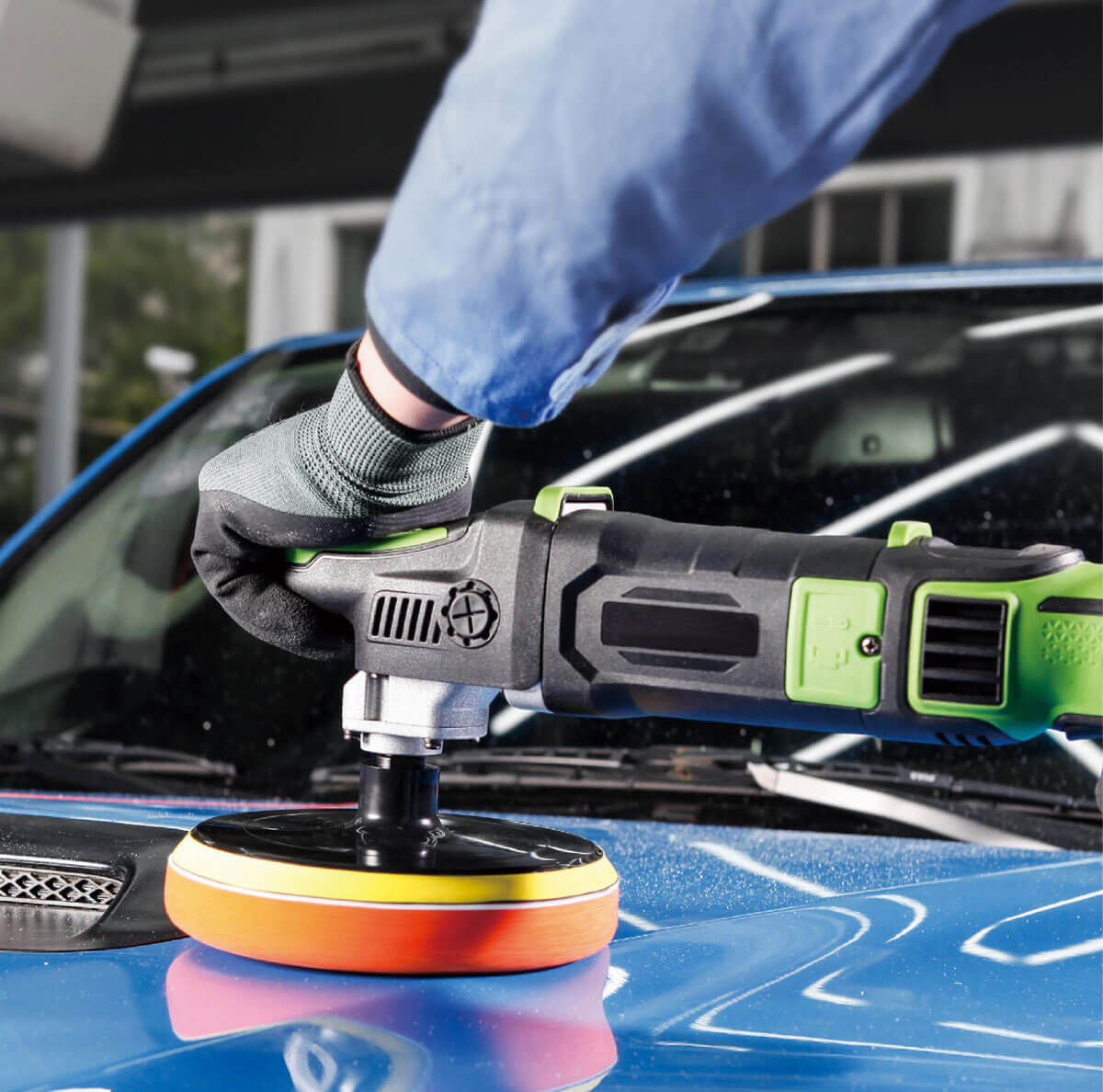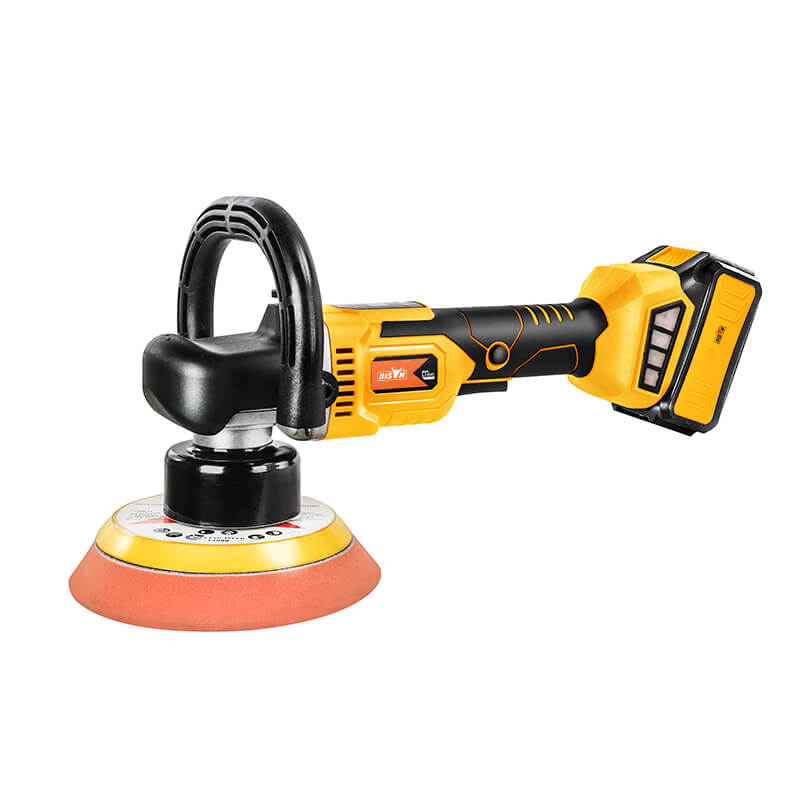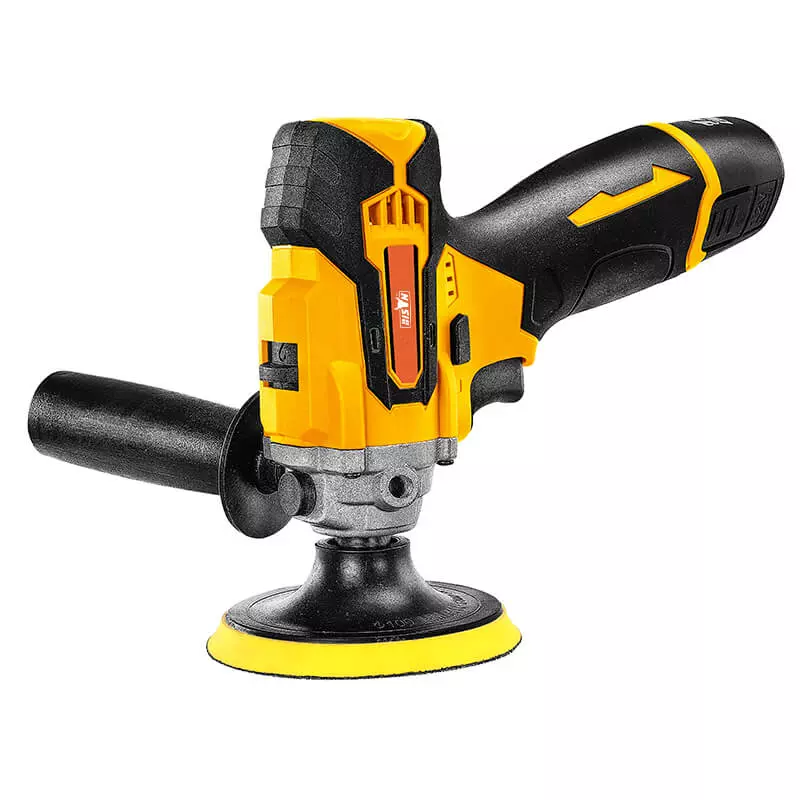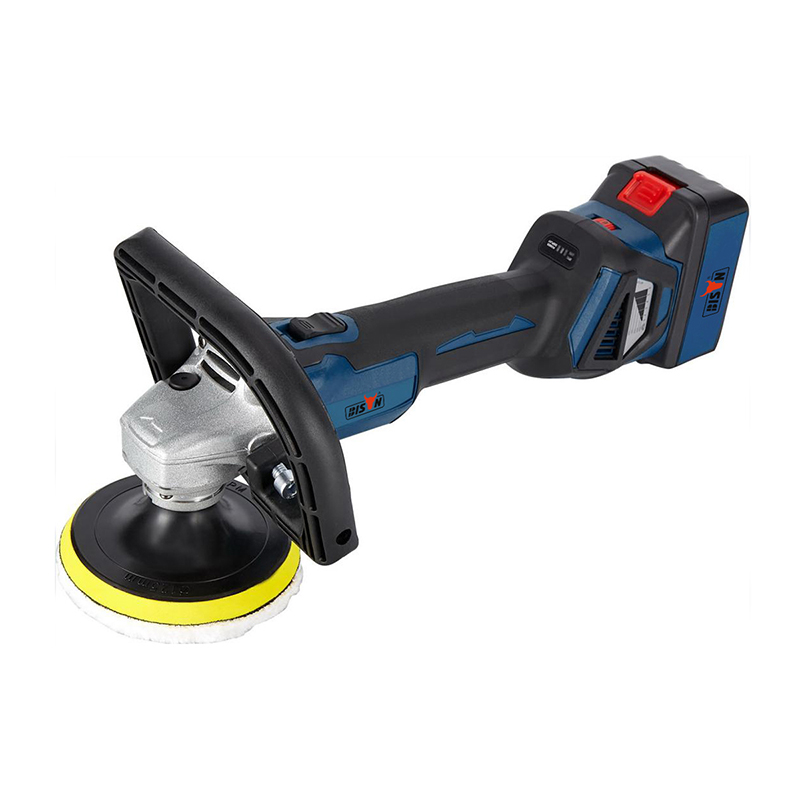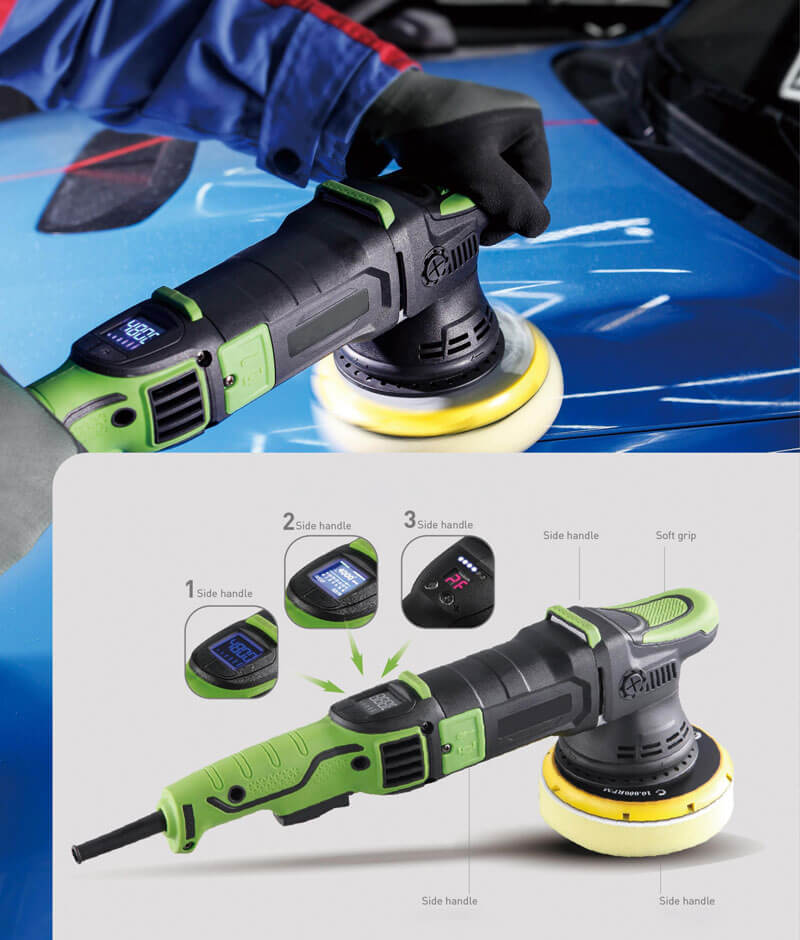Polishers are mechanical devices designed to improve and enhance the surface of various materials, with the primary objective of achieving a smooth and polished finish. Polishers play an essential role in several industries. From woodworking and metalworking to automotive detailing and jewelry making. These tools use abrasive materials, polishing pads, and movement mechanisms to remove imperfections, scratches, and irregularities from surfaces. Polishing tools improve aesthetics, enhance visual appeal, and sometimes even restore the material's original luster.
However, not all polishers are created equal. The impact and efficiency of a polisher largely depends on its quality, type and functionality customized for different use cases. A car polisher may not be suitable for furniture polishing, just as a rotary polisher may not be effective at completing complex detail tasks.
Therefore, finding the right polisher becomes a critical task, fraught with complexities.
To help these buyers, we've created this comprehensive guide.
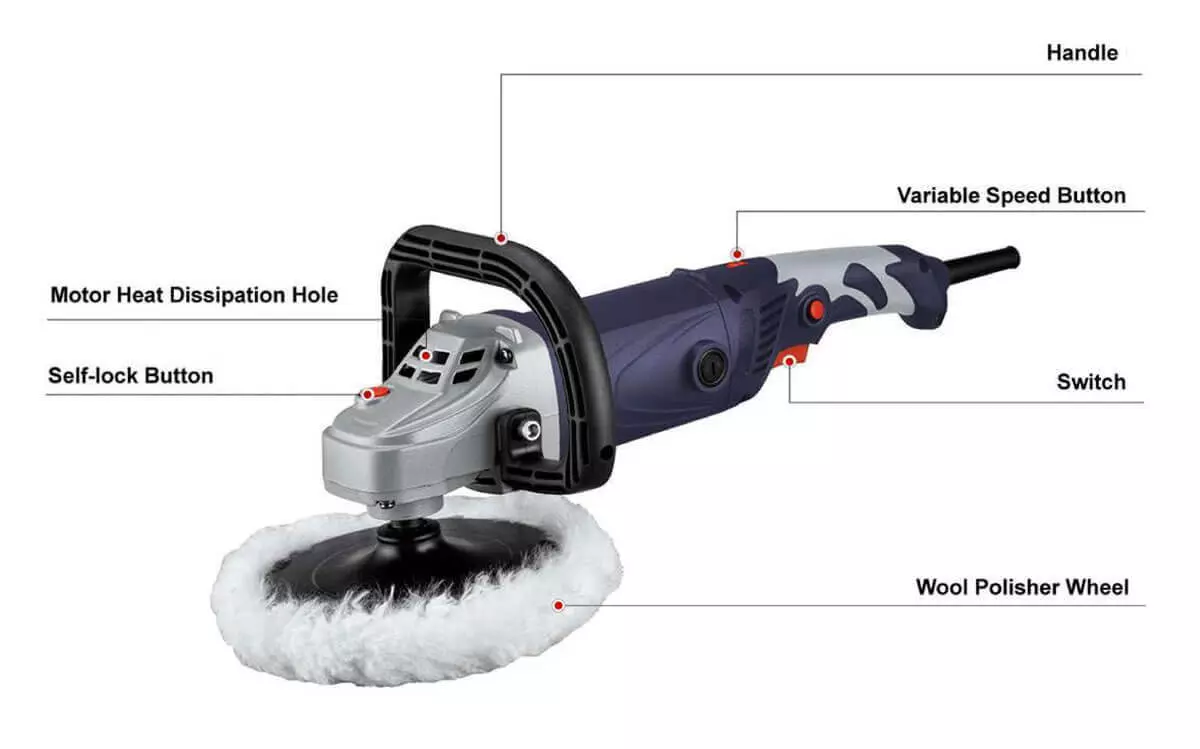
Types of polishers
There are different types of polishers, each with a unique, purpose-specific mechanism. Understanding these mechanisms provides the basis for making an informed decision.
Rotary polishers
Rotary polishers, sometimes called circular polishers, operate on a single rotary motion mechanism. That is, the polishing pad rotates on a single axis, just like the Earth rotates on its axis. The user applies pressure to the tool to remove imperfections from surfaces.
With its sturdy working mechanism, rotary polishers prove to be extremely beneficial for heavy-duty correction tasks. Rotary polishers are widely used in automotive detailing to correct paint imperfections. In metalworking, rotary polishers are used to polish various metals. Whether working on stainless steel, aluminum, or other metals, these polishers can remove surface blemishes, corrosion, and scratches, leaving a smooth and reflective finish.
However, this type of polisher requires careful handling and a certain level of skill to use effectively. Therefore, these machines are usually recommended for experienced users.
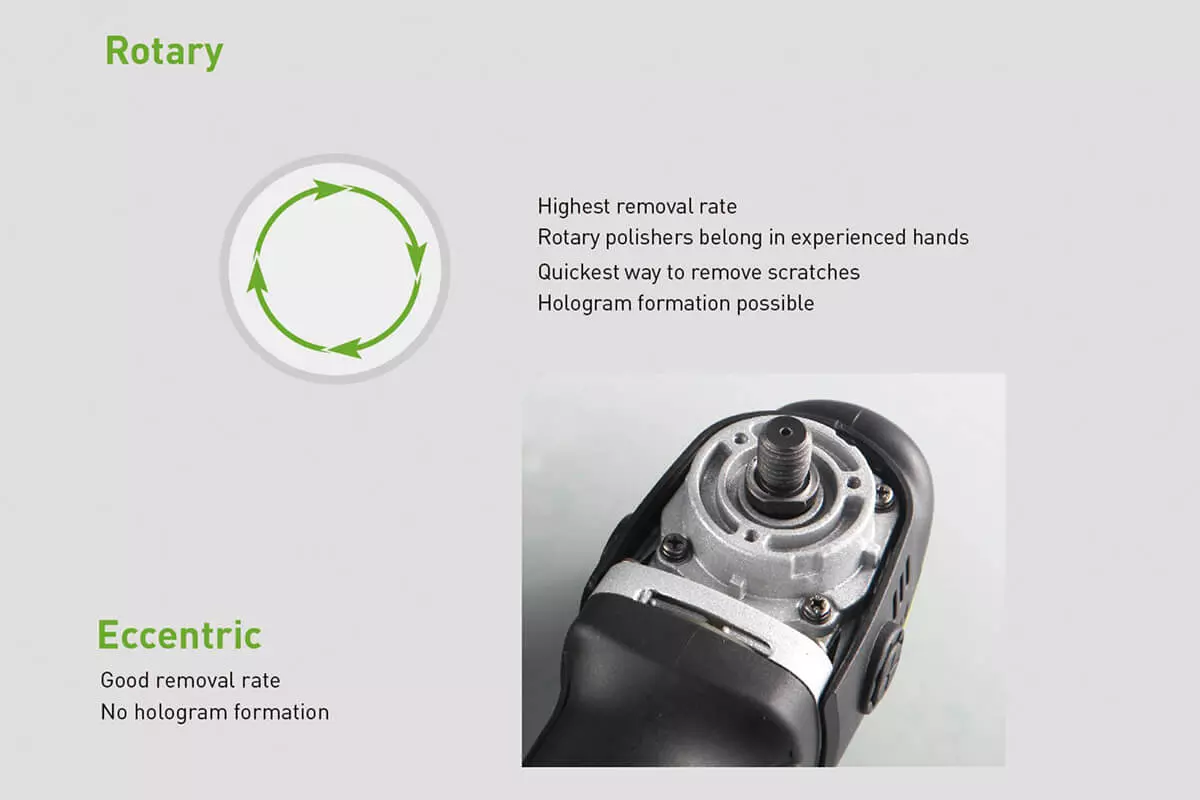
Double action (random orbit) polisher
Double-action or random orbital polishers use different rotating polishing actions to operate using a combination of motions. The polishing pad moves in two ways - it rotates about a central axis (rotation), and the pad also oscillates in an eccentric circular path about the central axis of rotation (orbital motion). Imagine that the Earth orbits the sun while it also spins on its own axis; this metaphor captures the essence of a double-action polisher.
The dual-action mechanism ensures heat and friction are evenly distributed across the surface. They are commonly used in automotive detailing for tasks such as waxing, light swirling, and enhancing paint finishes without the risk of holograms or swirl marks, making them safer for beginners.
However, they may require more time and effort to treat deeply damaged or oxidized surfaces.
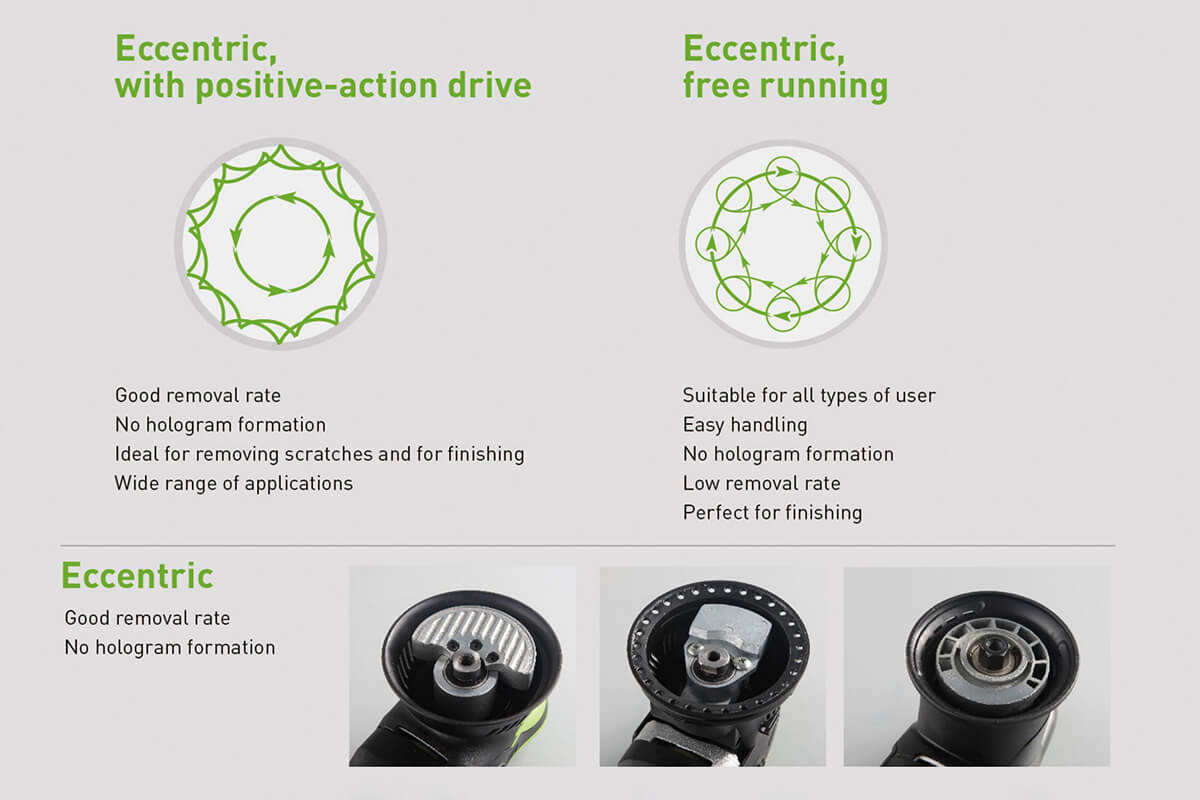
Angle grinder with polishing pad
Angle grinders equipped with polishing pads are widely used in metalworking. Metalworkers often attach a buffing wheel to an angle grinder to polish the surface. They are versatile tools for various metal polishing tasks, including removing rust, scratches, and weld discoloration.
Choosing the right polisher: important factors to consider
Choosing a polisher involves more than just choosing between a rotary and double-action setup. Factors such as power, speed, ease of use, accessories, reliability, and price all play an integral role in your purchasing decision. These factors must be carefully considered and evaluated to purchase a polishing machine that exactly meets your requirements.
power and speed
A polisher's power often determines its speed, two attributes that are critical to achieving efficient, high-quality work. More powerful polishers usually offer higher speeds and are suitable for handling heavy-duty tasks with ease. Polishers with multiple speed settings help meet the needs of multiple tasks and different materials.
Accessories: pads and compounds
Accessories enhance the versatility and effectiveness of your polisher. Common accessories include different polishing pads and compounds.
Polishing pads come in a variety of sizes, and size affects coverage area and the machine's ability to get into tight spaces. Larger pads (like 6 inches) are great for open, flat spaces like hoods or rooftops. On the other hand, smaller pads (like 3 inches) are great for narrow or contoured surfaces where precision is key.
Foam pads: It is ideal for finishing and achieving a high shine. They are available in different densities, allowing for the versatility to achieve different levels of cut and finish.
Microfiber pad: Effective for cutting and removing imperfections. Microfiber pads provide an aggressive cut, making them suitable for jobs that require more abrasive action.
compounds
Heavy cut compounds: They are used to remove aggressive materials and repair deep scratches or imperfections. Suitable for initial stages of polishing on rough surfaces.
Medium-cut compounds: They are designed to improve surfaces after heavy cutting. They remove moderate imperfections and prepare the surface for final polishing.
Finishing compounds: They are used for final polishing steps to achieve a high gloss finish. These compounds are less abrasive and focus on improving the surface.
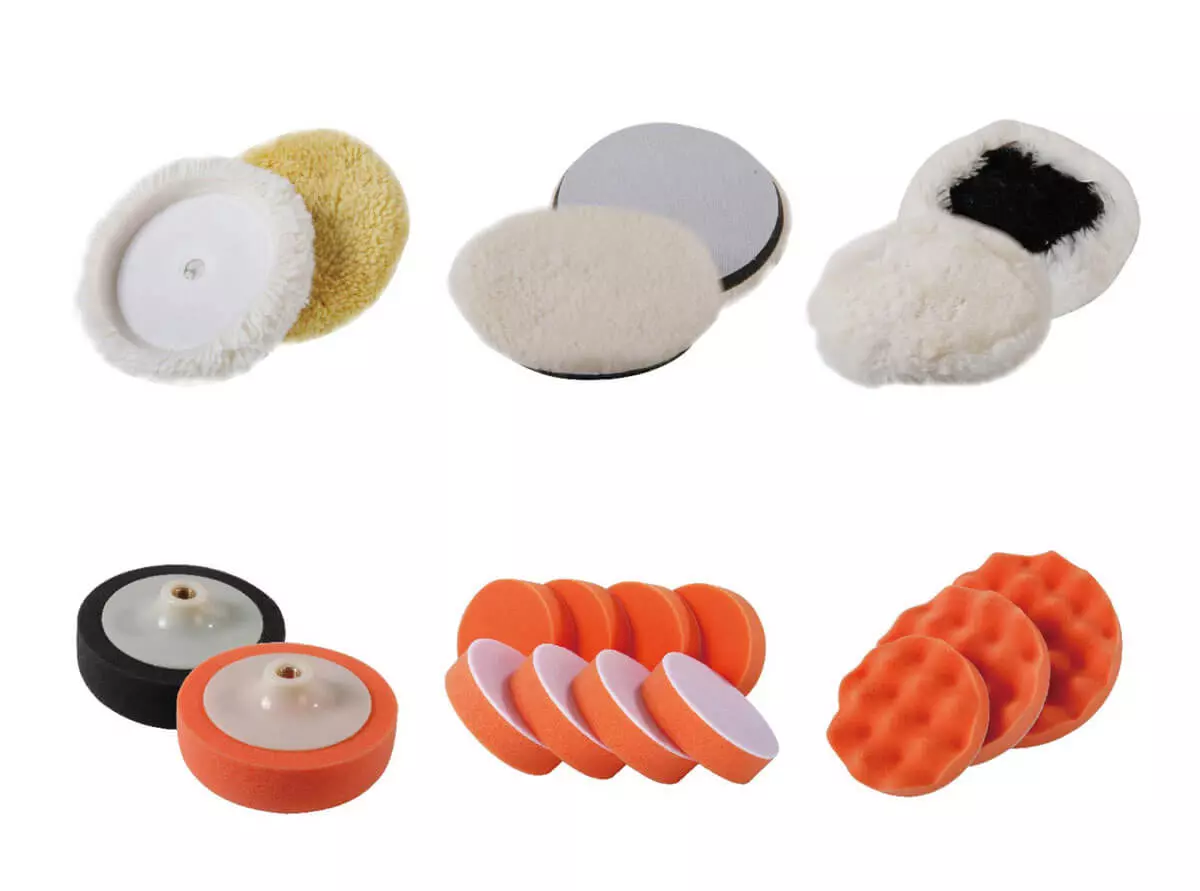
Different materials like wood, metal, plastic, or gemstones have unique properties and respond differently to other polishing methods. Coarse abrasives are suitable for removing defects and shaping surfaces, while fine abrasives achieve a smooth finish.
Easy to use
Availability is another aspect that should be considered when purchasing a polisher. Features such as the weight of the device, handle comfort, and overall design all come into play.
Heavy polishers can be tiring to use for long periods, so a reasonable weight (something sturdy but not too heavy) will be beneficial for long-term use. Ergonomic features, such as soft handles, provide better maneuverability and reduce user discomfort. Additionally, a well-balanced design reduces vibration and improves user comfort.
Other important considerations
Price and quality: You may be tempted to save some money by choosing a less expensive polisher.But, low-quality polishers tend to have a shorter service life and can result in poor results or even surface damage. A quality polisher can be a long-term investment, providing better results, enhanced durability, and most importantly, happier customers.
Polishing experience: New users may prefer user-friendly features and safety mechanisms, while seasoned professionals may opt for advanced tools with more control and precision. Choosing a polisher that matches the user's skills ensures effective and safe polishing.
in conclusion
Choosing the right polisher is more than just a random choice. As we discuss in this guide, some key factors play a key role in defining a polisher’s responsiveness, efficiency, versatility, and longevity.
Understanding these intricacies not only allows you to meet consumer needs more effectively, it also improves your credibility in the marketplace.
In our pursuit of excellence, we can meet your needs. As a professional polisher manufacturing company based in China, BISON offers a wide range of well-crafted, innovative and reliable rotary and double-action polishers.
Now working with BISON.
